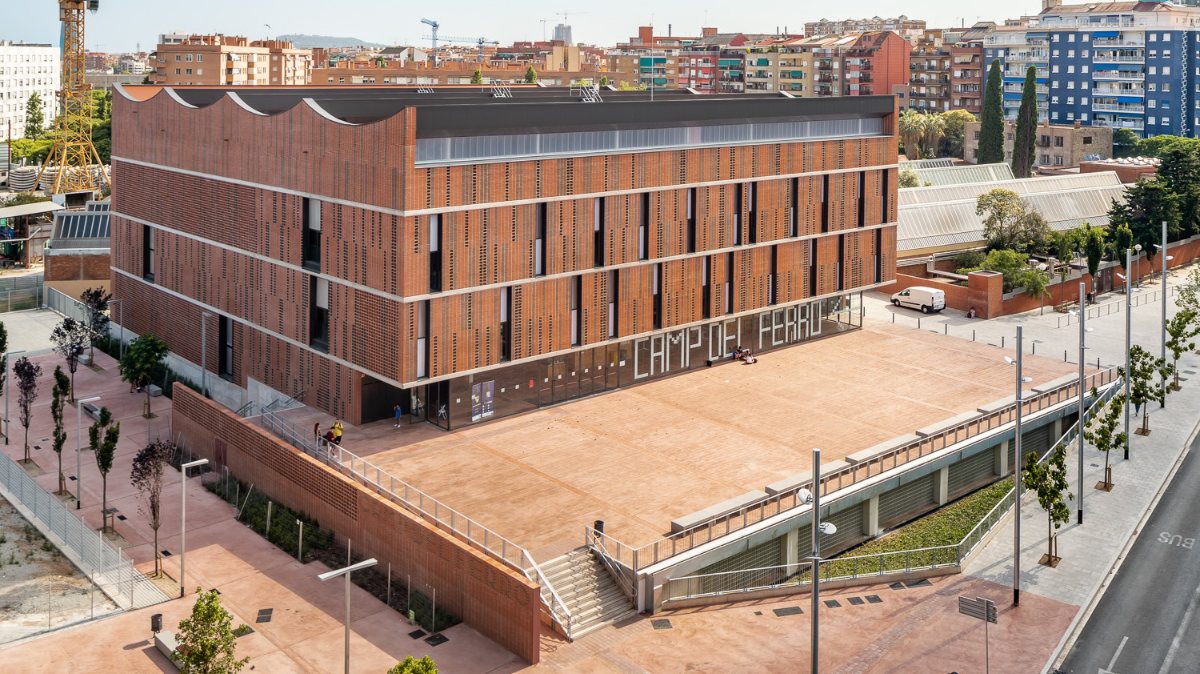
The team made up of AIA, Barceló-Balanzó Arquitectes and Gustau Gili Galfetti designs Camp del Ferro, Barcelona’s new sports centre, a visually striking amenity that brings public space to the city.
The density of the location, the limited dimensions of the site and the large scale of the brief—the problems tabled by the commission—are counteracted by a useful design solution that consists of semi-undergrounding the facility. Decisions such as the volume of the building, the use of lattice walls for solar protection and the existence of cross ventilation serve to minimize energy requirements and earn LEED Gold certification.
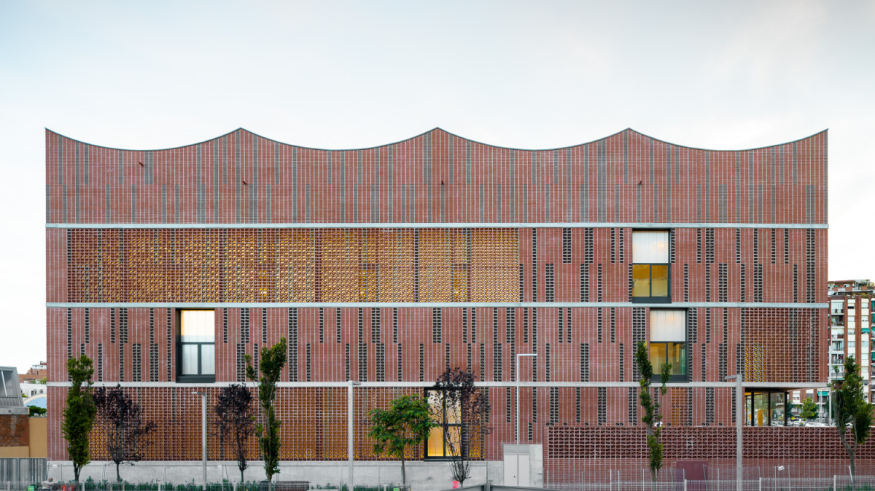
The project by architects Albert Salazar Junyent and Joan Carles Navarro (partners at AIA), Antoni Barceló and Bárbara Balanzó (members of the Catalan practice Barceló-Balanzó arquitectes) and the architect Gustau Gili Galfetti for the construction of the Camp del Ferro municipal facility in the Sagrera neighbourhood (Barcelona) won first prize in the public competition announced by BIMSA in 2015. Construction of the work, with a surface area of 7,237 m2, began in 2017. Now, recently inaugurated, it provides the Sant Andreu district with an amenity that includes three sports courts and a public space that improves accessibility and connection with the new infrastructure.
Given the large volume required by the extensive functional brief of the Camp del Ferro in relation to the limited dimensions of the site and the density of nearby buildings, the team of architects, after weighing the advantages and disadvantages, decided to semi-underground much of the sports complex. This intervention, by means of section mechanisms, ensures good lighting, natural ventilation and ease of access or evacuation of the lower areas. It is also a design decision that brings notable benefits to the amenity, the neighbourhood and the city, since, apart from reducing its visual impact, it generates a public space that acts as an urban foyer for the complex and facilitates movement around it. This free area is essential, comfortably addressing the issue of access and the complicated urban fabric of the enclave.
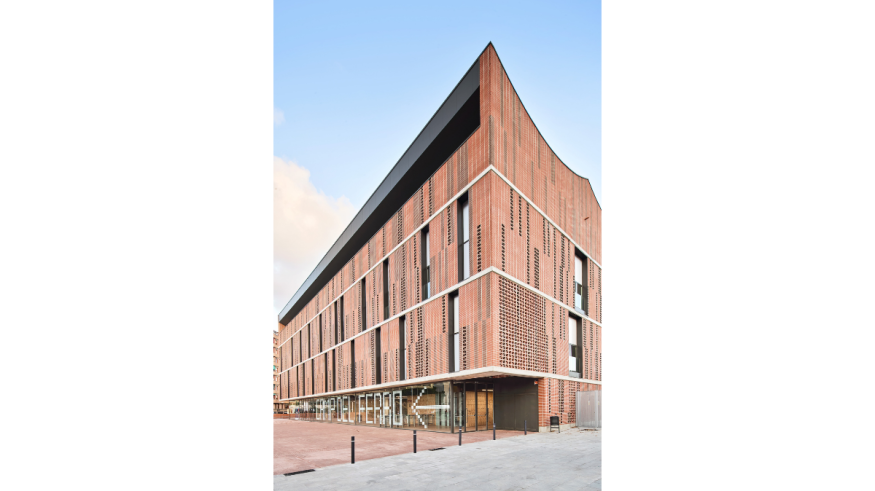
The chosen construction process recovers the memory of local traditions by using a material such as brick, very common in the old neighbouring factories, warehouses and workshops. Adopting the criteria of austerity of resources and means, in much of the building the construction system itself constitutes the finish, avoiding superposed elements. The same goes for the façades of bare brick, a material that ensures good ageing and long life. At the same time, with the aim of lightening the whole in all of its façades, the design alternates empty and full, opaque, translucent and transparent parts, and bricks of different formats and colours. The organization of the different areas of the brief is very clear in the longitudinal section of the building and in the floor plan, involving not just the superposition of the sports courts, but also the arrangement of a central volume containing all the smaller scale elements (services and storage, etc.), communications (vertical and horizontal) and installations. This is a compact volume that separates large-scale elements in the floor plan.
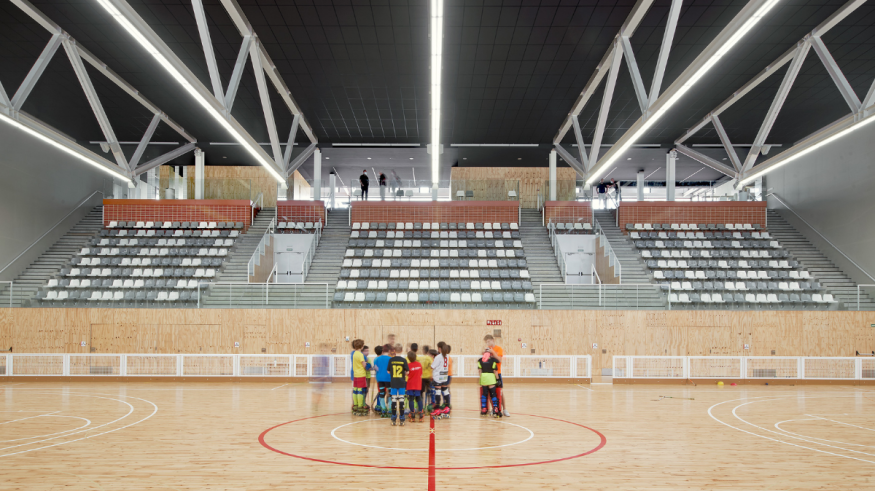
Finally, one more deliberate and intrinsic consequence of semi-undergrounding part of the building that houses the Camp del Ferro sports centre is the energy and environmental gain. Firstly, as the exposed surface decreases, the thermal inertia of the whole increases. Secondly, much of the surface enjoys controlled natural light thanks to large glazed openings and skylights protected by brick lattices and plant species that prevent direct sunlight and glare in the sports courts. Then the morphology and the situation of the different spaces that make up the building employ cross ventilation and stratification as the natural mechanisms of heat control. Renewable energies are harnessed for the energy production systems, the use and consumption of water are optimized, efficient techniques for rational energy use have been implemented and, in its construction and design, the building’s ecological footprint is reduced to a minimum. These solutions have earned the new facility LEED Gold certification.
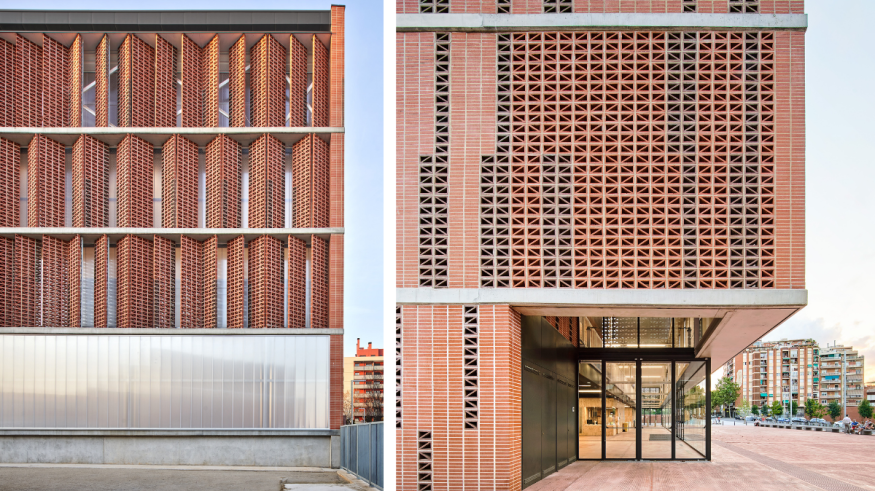
Credits
- Source: Media kit AIA Activitats Arquitectòniques, Barceló-Balanzó Arquitectes, Gustau Gili Galfetti
- Photos: José Hevia, Simón García (arqa)





